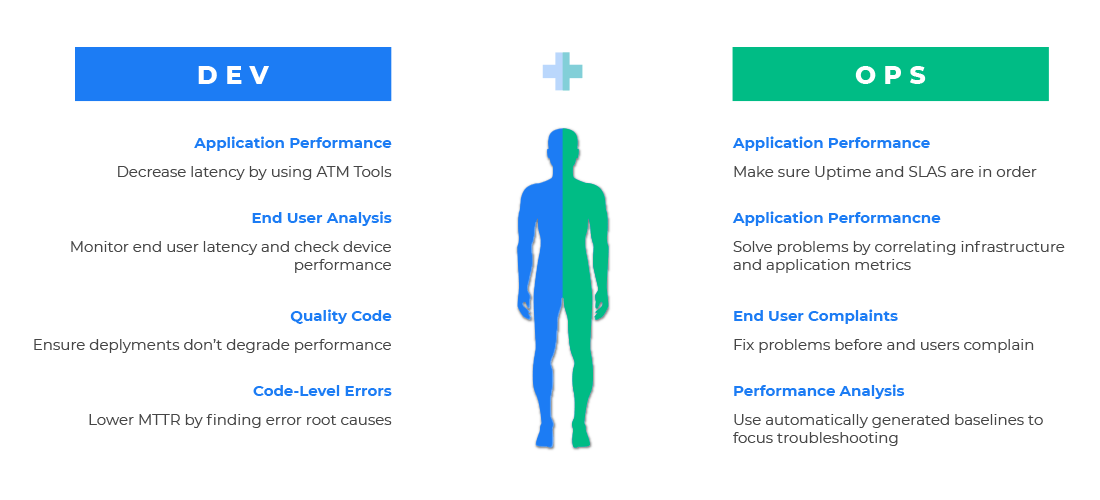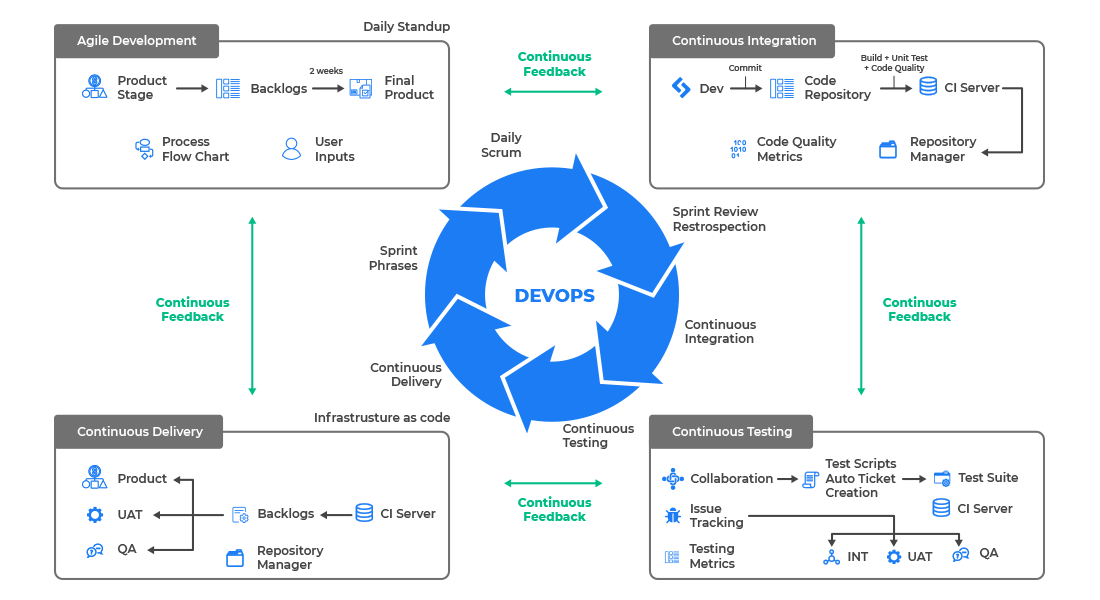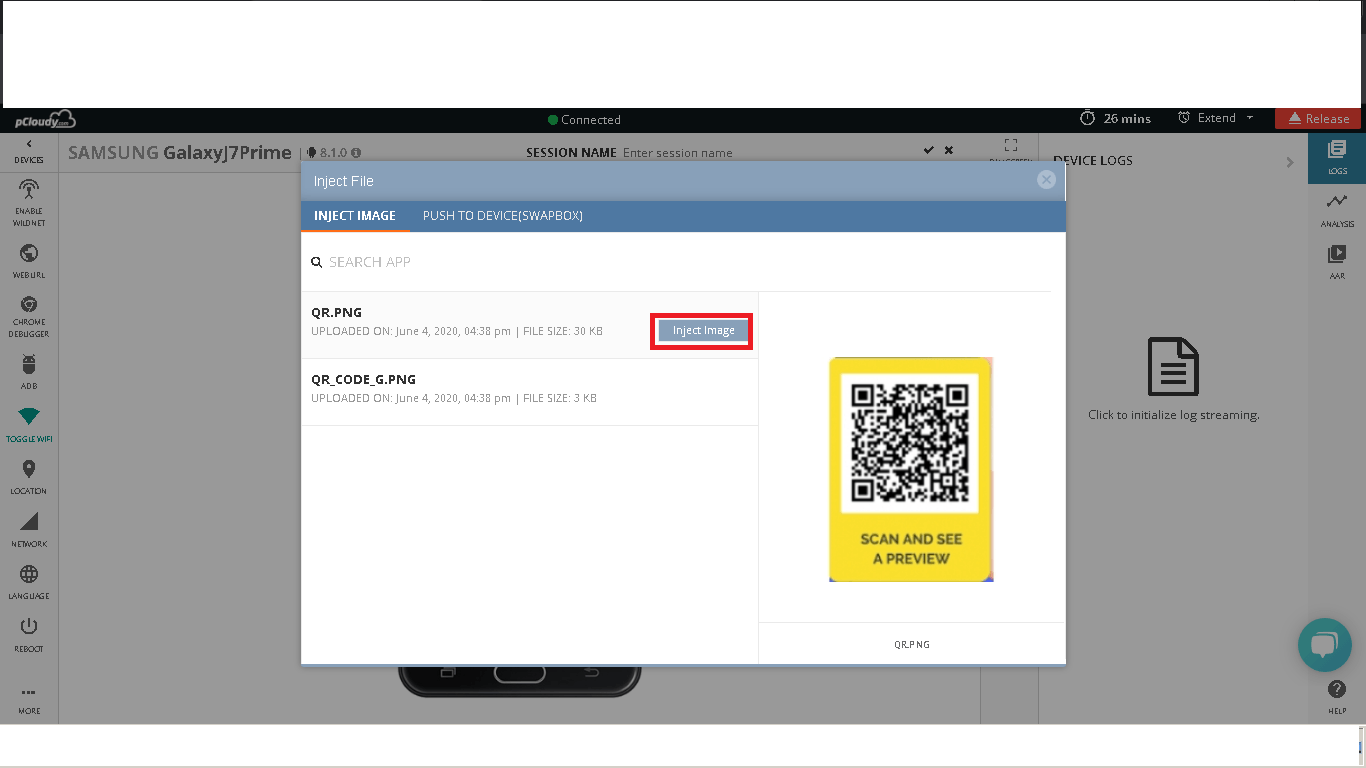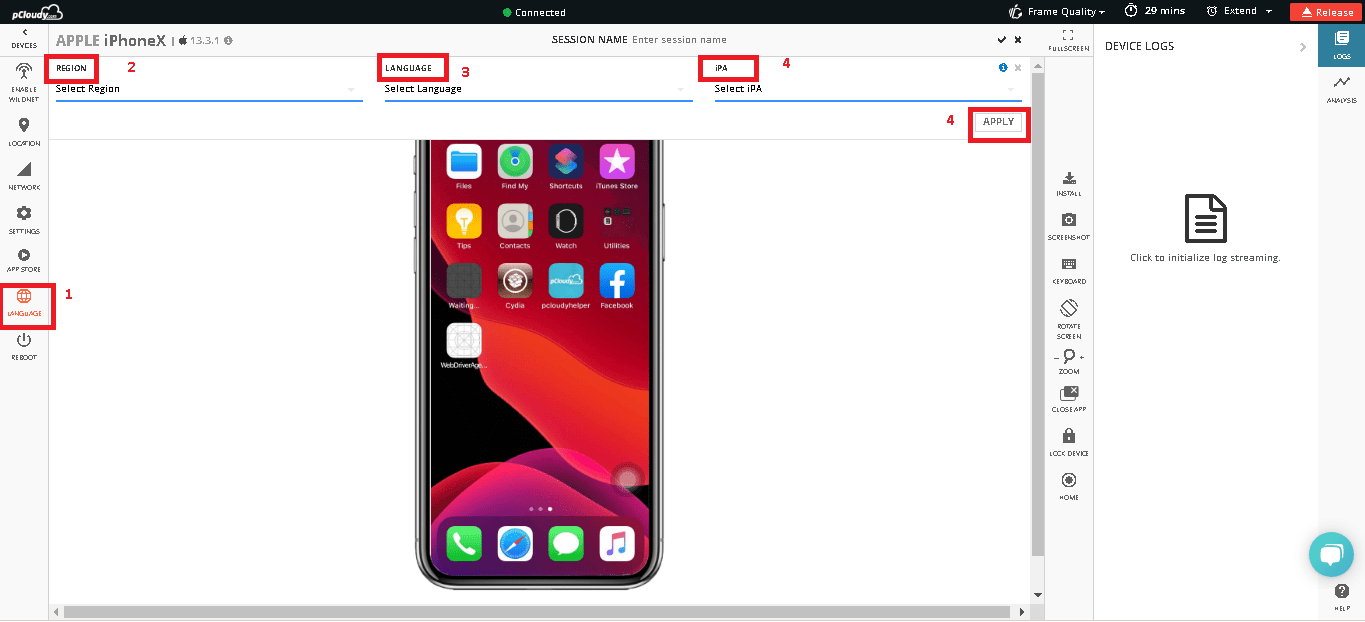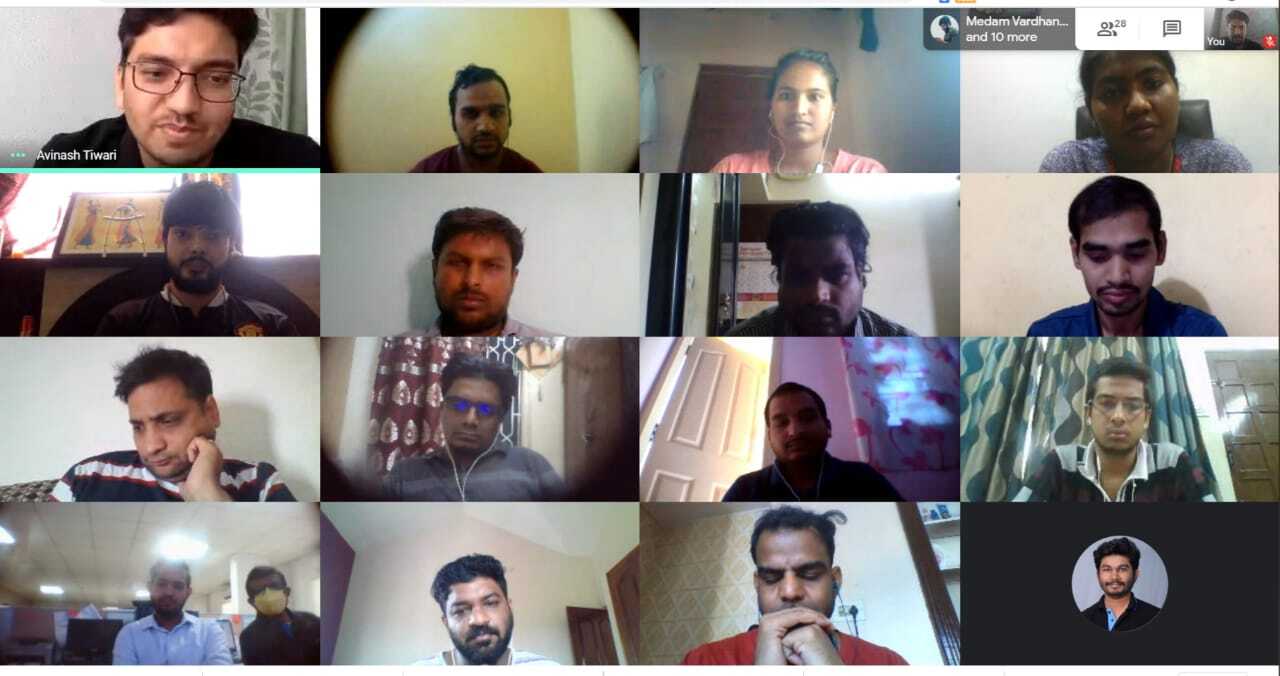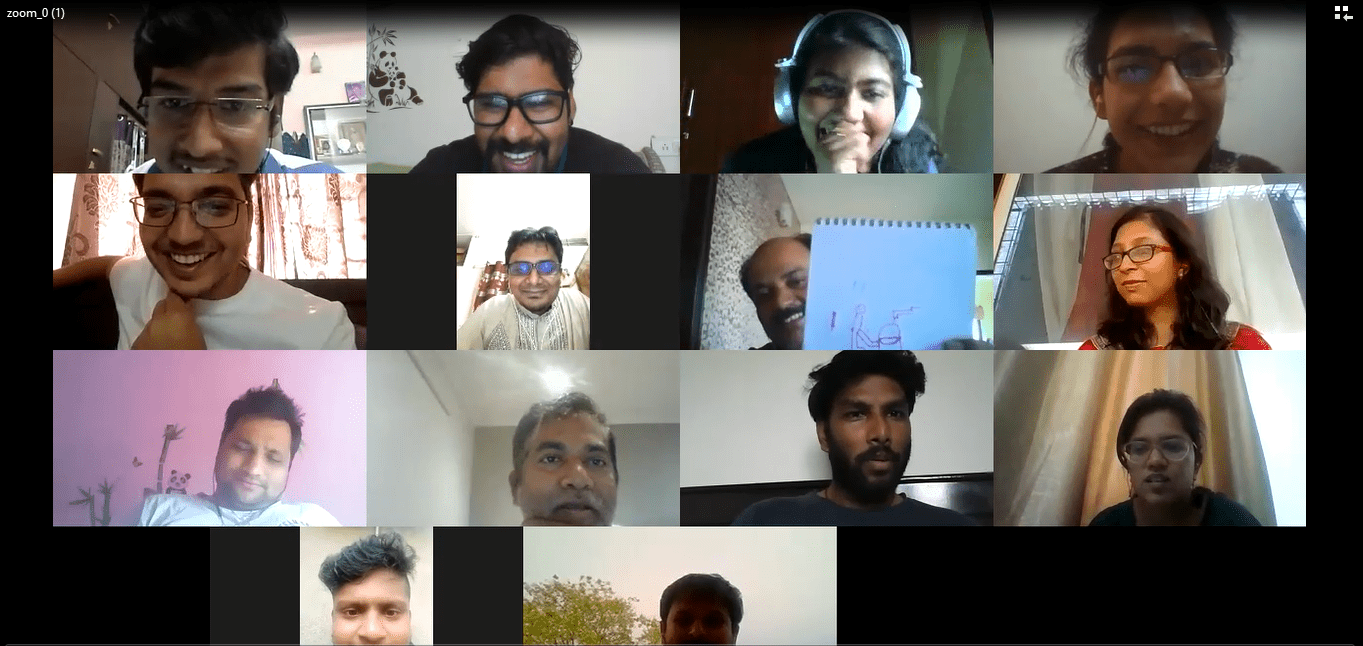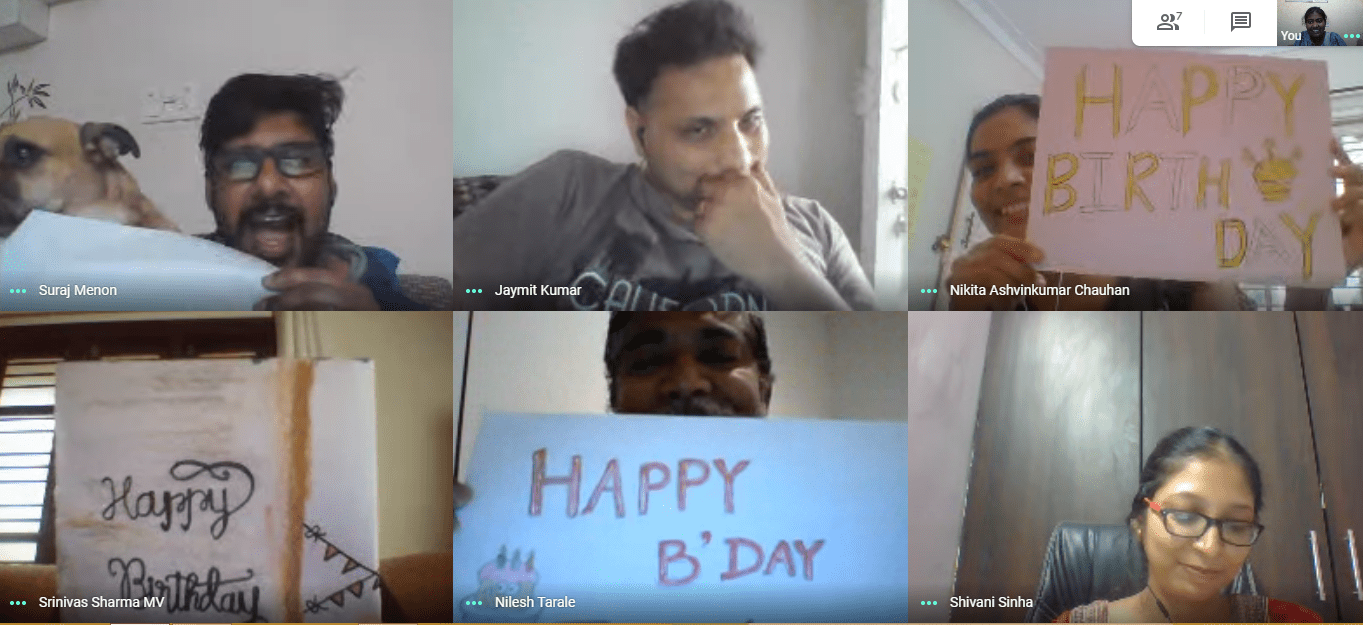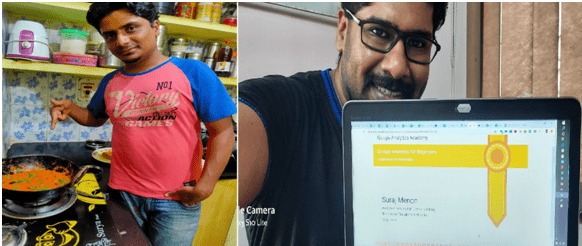“Everything you want is on the other side of fear”- Jack Canfield, the author of Chicken Soup for the Soul
All of us sort of live in a comfort zone. It’s like a bubble that surrounds us and it’s everything we are comfortable with. Whenever we bump against the walls of our comfort zone, we subconsciously turn away, leave from that discomfort and end up never doing it. Staying in this kind of comfort zone is unsafe in a long term. We need discomfort in order to grow. If we stick with what is comfortable, we’re giving up any hope of finding greatness. So it’s really important that we cultivate and embrace discomfort in our daily life. Instead of fleeing from uncomfortable situations we have to learn to face in, embrace it, and really become at peace with it.
The first step to cultivating discomfort is to be aware when you’re uncomfortable. You have to be present of your discomfort. The second step is, once you’re aware of this discomfort, embrace it and the next time when you have to experience it, instead of running away from it you push into it head on and you really kind of accept it.
I’ll share with you two tools that will help you lean in discomfort. One of them is a really simple test called coffee test. All you have to do is go into any coffee shop and whatever you order ask them for ten percent off. Don’t give them a reason, don’t justify it. This is a very simple and easy way to cultivate discomfort and implements the ability to actively go out and seek things that are uncomfortable.
The second way is through a process called social skydiving. It is just walking up to a conversation, usually with a group of people that you don’t know at all. And just kind of join the conversation and, immediately insert yourself into it and start talking to people. The key to social skydiving is that when you’re entering into this situation, you don’t know what you’re going to say, you don’t know what they’re talking about, and you just throw yourself into this situation. It’s really hard to do it but, the more you do it, the more you cultivate discomfort.
Those are two very practical ways that you can cultivate discomfort. I’m an introvert, so it is something that is sort of terrifying for me to do but still I have planned to try it.
Embracing Discomfort is like building a muscle. Every time you get to the edge of your comfort zone, just push into that discomfort. The first time you do something that’s really uncomfortable, it’s scary. The second or third time it’s still nerve-wracking but you know that you’ve done it once before and it gets a little bit easier. The hundredth time that you do something, it’s starting to be fun and easy and it’s almost enjoyable because you’ve done it so many times.
“A person’s success in life can usually be determined by the number of uncomfortable conversations they’re willing to have”- Tim Ferris. The more uncomfortable conversations, the sale pitches, the tough business negotiations, whatever that may be, the better you get and the broader that sort of sphere of comfort expands to.
I would like to share a story about my own discomfort and how I kinda overcame it. I had terrible stage fright. During my MBA days, we were required to present case studies and articles almost every day. I was terrified of getting on the dais to give the presentations. The thought of doing so itself would make me sick, so in order to escape that I used to take up all the activities like finding the solution to the case, preparing the presentation except for the presenting part which I used to direct to my team mates.
But, sometimes we were asked to make presentations alone and not with a group. During those single presentations, I would start shaking, stuttering and pausing during my speech. It feels like having a black out, I used to totally forget about what I’m presenting, the only thing that would be on my mind in the fear of making mistakes and being judged.
I realized that this can’t go on; either I have to force myself to face this fear and get better at it or avoid it and never reach my full potential. I started by mustering up the courage to present small topics during group presentations. I used to rehearse my part in front of my friends. I gave myself short pep talks like “You have got this, Jero! “, before stepping onto the dais. Initially things were difficult, I did stammer and pause but then when I started doing it more often by volunteering to take up more presentations I gradually improved. I wasn’t having the panic attacks anymore. Facing my fear more often made me overcome it. Today, I’m able to make presentations and talk in front of a crowd more comfortably than I was before.
Whether it’s public speaking, or social skydiving, or selling, or whatever it might be, whatever thing discomforts you…Face it and build that muscle to embrace discomfort, things that once seemed scary and uncomfortable will become first… sort of less scary, then less scarier and eventually you will become good at it.
Month: July 2020
Motivation changes exactly nobody. The bad hand that was my life was mine, and mine alone to fix.” David Goggins
Few months back I read a book called “Can’t hurt me “by David Goggins. It’s a story about how the author transformed from being an abused and unprivileged child to being an overweight bug exterminator to eventually becoming the thirty-sixth African-American Navy SEAL. I figured I’d share with you one key lesson I’ve learnt from this man.
I noticed Goggins is an obsessive person in some aspects of his life. He became obsessed with learning, running and physical fitness training. He started from an extremely low level in all of that he was obsessed with. Before taking the test to enter the Air Force, he read like a second grader, so he had to teach himself to read so he could pass the tests. Before joining the Navy SEALs, he weighed nearly 300 pounds, more than a hundred pounds over the weight limit for entering into NAVY, and with only two months to lose the weight. He did it with an insane amount of obsession.
He says that Motivation doesn’t last. It comes and goes just like feelings. We watch/ read something inspirational and get motivated and then we have one bad day, all our motivation is gone. If you want to achieve something in life, we need to focus on giving our best consistently and that focus comes only with Obsession.
Be obsessed with whatever you are doing. It can be anything, learning, writing, technology/coding, goals or your work. When you are obsessed, you won’t let go easily. Get to a point in your life, when you don’t do what you are supposed to do, it should haunt you and eat you away for not doing it. Also, obsession helps you push yourself to go further and harder than before. Pick something you want to improve in your life, which you struggle to get “motivated” to improve. Get “obsessed “with that and see yourself achieving it ! If it doesn’t kill you for not putting enough efforts to achieve it you are not there yet!
“Don’t wait until everything is just right. It will never be perfect. There will always be challenges, obstacles and less than perfect conditions. So what. Get started now. With each step you take, you will grow stronger and stronger, more and more skilled, more and more self-confident and more and more successful.”― Mark Victor Hansen
Have you ever wondered what makes someone successful? What makes someone good at academics? What makes someone a top performer? Why do some people achieve their goals while others do not? When we answer these questions, we usually think that their talent and intelligence is what makes them successful but researchers say that talent only accounts for 30% of their achievement. Then what makes a bigger impact than talent? It’s their MENTAL TOUGHNESS.
Mental Toughness is the ability to move towards our goals, irrespective of what the circumstance might be. People who are mentally tough, just don’t adapt well in face of adversity, trauma, tragedy, threats or stressful situations but they also thrive in such situations. Irrespective of whatever the situation might look like, they face the challenges head on and find ways to thrive.
Have you ever heard of astronaut – Chris Hadfield? I’d like to share with you a really fascinating story about his experience during a spacewalk where he exhibited incredible mental toughness. During his first space walk there was contamination inside his suit that got into one of his eyes and stopped it from working but he kept doing the work he was doing with the help of his other eye. Since there is no gravity the tears from the contaminated eye balled up and flowed to the other eye through his nose. Now, his other eye was also contaminated and he couldn’t see completely.
Imagine if we were in this situation what would our reaction be? I bet we would’ve been cripplingly scared and panicked but Chris maintained his calm. Instead of being worried and overly dramatic with the problem he was thinking of ways to try and solve the problem. He says in an interview “In this case I was incapacitated to some degree but I could talk, I could think, I was still fine, I could communicate with everybody, I just couldn’t see.” In the end he did come up with a solution, he opened the purge valve of his suit and let the contaminated atmosphere exit. Once the contaminated air was out, he was able to see again.
He says that there were only two things on his mind in that moment when he completely lost his vision while floating in the outer space.
1) He was thinking about what caused the problem and what the solution could be.
2) He was frustrated because he couldn’t do the things that he was supposed to do.
He should be building this huge robot arm on the outside on the spaceship but he was floating uselessly. Even when he wasn’t sure if he’d regain his sight, he was all concerned about finding a solution to the problem and completing his mission. To become successful we need to cultivate this kind of mental toughness – the grit – the perseverance and passion to achieve our goals.
In ordinary course of events, our life holds some good times and some bad times as well. Everybody has to face some stress, challenge, pain and tragedy in one form or another. But the way we respond to such hardships makes a difference. Some people wilt and crumble and quit when things go badly but others seem to consistently rise to the situation, no matter how bad it is, meet their challenges courageously and confidently. The one thing that separates those who weather the storms in their life well and those who are consumed by them is their Mental Toughness.
In the recent months, we all have seen a redefinition of life in an unprecedented scale. The shifts we’re seeing have affected nearly every aspect of our lives, so it’s essential to develop the mental toughness to stay strong and resilient in the face of adversity. We cannot have control over all the difficult circumstances in our life, but we can retain a sense of stability by controlling how we respond to hardships. Feeling strong and balanced allows us to adapt to changing circumstances more readily and find creative solutions to problems, which is important to achieve our goals.
In today’s organizational environment, ‘DevOps’ is the most used buzzword and has become a part of its agile software culture. Organization’s DevOps success is not a single goal approach; it requires deeper involvement for making a switch to DevOps. Broadly, it requires adoption of new DevOps automation tools, contemporary processes and cultural shift, especially in case of Mobile DevOps tools selection. A business has to be equipped with ever-evolving principles and DevOps automation tools in order to embrace these steps to successful DevOps test automation.
There are multiple Mobile DevOps Tools with different strengths contributing to a reliable Mobile DevOps process. Today, the businesses and the development teams are investing in intelligent systems that are capable of monitoring the production and development metrics in real-time. This acts as great deal for the development firms unless it covers all important aspects of the process allowing perfect optimization of the resources based on the reports.
The journey from planning, development, deployment and beyond, generally called ‘shift left’ process which is a part of continuous testing. In this approach, the testing is mostly focused on earlier stage of production life cycle aiming at delivering applications faster and with much lesser time and money. When it comes to mobile apps testing, the shift left approach works well because the application has to be tested well in order to perform well in the real-environment. In case of Mobile DevOps, using production environment to test the mobile application on real physical devices would help highlight and fix issues in the earlier phases of SDLC, reducing costs and time.
Gone are the days when testing was only executed as a final step of the processes where as nowadays, it has to be performed after every build, at every stage of the process. It is with the help of multi-step testing and maximum data capture after each test cycle, that the status of development and testing hasn’t been compromised enabling early bug-fixing and building more strong applications especially when this process is simplified with the help of DevOps automation tools. DevOps and Automation go hand in hand. Despite many challenges, it carries a much strategic role to bring the whole business making faster and better applications. A developer has to have a combination of agile development methods along with Mobile DevOps to win in mobile application; this can be achieved with the help of right DevOps automated testing tools.
Below are the 7 most common Process Steps with Mobile DevOps Tools:
CODE
Anything related to real development is related to continuous integration whether it is code development or code reviews. The way developers work today by collaborating; integrating all the things together is all a gift of the agile approach which is responsible for making continuous integration popular. With the adoption of continuous integration early stage issues are detected which ultimately reveals any integration glitches, faults in the code commits, etc. It generates a lot of data required for making right choices to be made by the developer as it showcases a lot of data about the mobile application that the developers can use to make the code better. This thus ultimately helps in estimating the scheduling and time consumption more accurately.
BUILD
Build is nothing but application components that are collected repeatedly and compiles for the purpose of testing to produce a reliable final software product. This is not a one-time job, instead it is a developer’s everyday task of creating various builds of applications. In Mobile DevOps scenario, in order to notify the status of the build, the developers use various version controls and source code management techniques. Software Engineers normally follow branching techniques in case of Mobile DevOps like no branching, release branching, maintenance branching and branching for features.
TEST
Testing is something that acts as a backbone of building a quality product. It is the QA team that is responsible of maintaining the sanity of the software, detecting errors early and quick bug fixing. Testing is the most integral aspect of SDLC. Considering the Continuous integration principles, automation testing needs to be automated in order to enjoy the seamless results i.e rich and flawless application. Testing in Mobile DevOps for a production environment should always be performed on real mobile devices and not on Simulators.
PACKAGE
Packaging in Mobile DevOps is already known. It is all about tools for package repositories and storage mechanisms for the binaries created during the software build. Binaries like scripts, configuration files and other files facilitate deployments; these are contained in the asset repositories. Continuous deployment eases the application testing and production with the help of automation, flawlessly. Packaging enables the releases of new versions and features of applications to the end-users.
RELEASE
In Mobile DevOps process, there are myriad of tools that are used in aiding in the process of CI/CD and continuous release. As a part of this, there are application release tools as well that help in packaging and deployment of an application right from the development to production, to be available to the final users using automation. Release management is a critical expertise which involves planning of every release and deployment by easy collaboration with the stakeholders. This is accomplished with the usage of release management tools that help stakeholders to plan and execute and trace the releases from a single platform.
CONFIGURE
Configuration is a second name to Infrastructure as a Service. Configuration tools enhance the cost-effectiveness and create applications with better flexibility and performance. The aim of this process step is to remove any unwanted manual configuration. In DevOps , the focus is on automation and collaboration, so configuration being a part of the ecosystem is also automated across various development flows.
MONITOR
Without valid data, no corrections and improvements can happen. Thus, monitoring becomes a very important aspect of the Mobile DevOps ensuring that the organizations get the right metrics about the processes, stage wise results and final outcome. Continuous monitoring allows stakeholders, developers, testers and other people involved, the access to right information for evaluation and decision making. This step is guide to all teams involved and has an impact on all the other steps. Thus making it a critical process step with Mobile DevOps tools.
Traditionally, the Process Steps involved planning, developing, testing and deploying but this is not it, there are many more aspects to it that are the key deciders in selecting the tools and how they fit together to enable tool flow in SDLC. DevOps test automation helps in achieving integrated development and delivery using the right combination of DevOps automated testing tools.
Want to test your Mobile App?
Join pCloudy Platform!
Signup for Free
We all understand the importance of software testing and how it transforms the goodwill of the business by enabling delivery of quality product to its clients in shorter delivery cycles. It becomes challenging to run the test cases manually by evaluating the quality of each line of code at every step of the continuous Delivery process. This is where Continuous testing in DevOps comes into picture.
Continuous testing in DevOps Pipeline
In traditional ways of testing the software used to pass through different development and QA phases which took more time until the final delivery of the product. According to a research by Gartner, Continuous testing in DevOps is aimed at providing early and quick detection of signs of risks related to the product release. DevOps Continuous Testing is an inevitable activity of the delivery process rather than just a mere stage in the delivery process. The main purpose is to inculcate quality into the CI/CD pipeline by utilizing the key benefits of continuous testing in DevOps.
DevOps Continuous testing is a critical aspect responsible for seamless Continuous Delivery. It involves the usage of agile development methods and processes into the QA process further providing a productive testing process.
Here are a few points to understand the benefits of Continuous testing in DevOps at the deeper levels:
a. Provides Sustained Risk Analysis:
There has never been any code build that is error free and in a ready-to-release form. Even if the final release candidate has come without any glitches, passes all the tests, it has to be ‘prepared well’ for the final release and approved by the business leaders. Continuous Testing evaluates the code at a deeper level to estimate all the possible risks connected to it so that a corrective action could be taken at the right time without breaking the ‘continuous delivery’ chain.
b. Cuts down the feedback cycle:
The key benefit of continuous testing is that it evaluates the code layer by layer at each stage of delivery pipeline, allowing testers to understand the source of the problem. The actionable insights helps the QA team to act on time and avoid longer queues
c. Broader Test Coverage:
A broad range of tests can be applied throughout the testing process with the help of continuous testing tools for DevOps such as Selenium, etc. It covers both functional and non-functional testing types to increase test coverage by emulating testing like cross-browser testing, API testing, regression testing, integrated testing, unit testing and non-functional testing like security, reliability, scalability, usability and many more.
d. Delivering High Quality Product:
‘Test-early-test-often’ is the key mantra of continuous testing which is self explicable. In order to ensure delivery of high-quality product to the end user, there needs to be a process to continuously monitor the progress along the entire delivery pipeline. Achieving high product quality is the result of continuous testing that strives to finding and addressing risks effectively and by gaining feedback at the early phases of software development lifecycle.
e. Faster Software Delivery:
The whole point of introducing Continuous Testing in DevOps is to speed up the product delivery cycle. Following a multi-point testing at different stages allows the QA team to detect the glitches early and take quick corrective actions so that the final delivery is not impacted.
f. Easy Integration with the DevOps Process:
Continuous testing seamlessly integrated with the DevOps process right from the early stages of the development process rather than functioning just before the release. Continuous integration into the software pipeline enables quick fixes so that the development process can be aligned with the business requirements on time.
Tools for continuous testing in DevOps
For a seamless experience in the entire CI CD process, Continuous testing has to be supported by the best tools for continuous testing in DevOps. For performing smooth Continuous Testing, the Automation Framework has to be integrated with the CI tool, version control and various automated continuous testing DevOps tools to execute different types of testing at various stages of the process. For example, :
- Using Selenium for performing functional testing
- Load runner for performing load testing at its best,
- Secure code analysis using Fortify and static code analysis using Sonar, etc.
Apart from these there are many other trusted DevOps Continuous testing tools available in the market for an efficient continuous testing, like JIRA, Jenkins, Bamboo, Docker, Appium, SoapUI, PagerDuty, CodeCluster etc. The concern is that not all the tools support comprehensive automation solution. Some organizations prefer to create self-made automation frameworks depending upon the version control used to enable complete automation of the CD pipeline.
Since Continuous testing is the most critical aspect to be covered by the business in order to achieve quality product release, it has to be backed by the choice of right, suitable tools and frameworks to achieve speedy and quality delivery.
Challenges in DevOps Continuous Testing and how to overcome them
Even after understanding the advantages of adopting continuous testing in the DevOps process, many organizations face the challenges of successful implementation of it. Establishment of an efficient automation framework is a daunting deal as it involves a huge investment, expertise and effort. Moreover, the organizations are not equipped with the scalable infrastructure to run tests continuously. Also, without a strong coordination among the product, development and testing team, this seems even tougher. Although there are challenges in successful adoption of Continuous testing, with a little sensibility one can overcome it. Here are a few of the key points to comply in order to overcome the challenges :
- By proper team engagement, the cultural and communication barriers can be dealt with enabling the SDLC team to have better coordination, collaboration and understanding of the scenarios.
- Reducing unnecessary and extensive testing plans, the focus should be on keeping it simple and logical. Instead, the energy could be diverted to more important test objects in order to create much better measurable results.
- Automation would ease the successful implementation of continuous testing in DevOps. Well, complete automation isn’t achievable but more the process automation, easier it becomes to carry on the continuous testing.
- Carry out testing at all stages of production and QA environment would continuously providing feedback to developers to improvise on the product quality.
- Last but not the least, implementing artificial intelligence and other intelligence programs for problem solving and to think beyond automation at every stage of delivery would boost up the SDLC.
By now we all know how significant continuous testing in DevOps for any business. It essentially brings together all the stages of designing, developing and deploying the software. Merely providing a software product does not help but providing best products faster than the competitors would be the key differentiator of your business. If practiced earnestly, it provides consistent insights about the software development to ensure speedy delivery.
Want to test your Mobile App?
Join pCloudy Platform!
Signup for Free
Our commitment to delivering the best mobile app testing solution motivates us to come up with product updates at regular intervals. We feel elated to announce the release of pCloudy 5.7 with exciting new features to make app testing simple and faster. Our customers trust us because we believe in exceeding their expectations and enhance the platform’s capabilities. For those who are new to pCloudy, it is a cloud-based continuous testing platform designed to enrich mobile apps. In this new version of pCloudy, we have addressed the concerns of our users and added new features like QR code scanner, app language change, and more. Let’s know more about all these features.
QR code/barcode scanner
This has been one of the most demanded features for pCloudy that enable users to scan a QR code or a barcode on any Android device present on the pCloudy platform. To use the feature, you need to register on the pCloudy platform. You also need an application under test which supports QR code scanning and a QR code file(test QR codes). To test the QR code scanner function, upload the QR file image in MyApp/Data, connect any Android device, install the QR Code file in the device.
Then select the app and install it on the connected device. Select the test QR code file that has to be scanned and the app will scan the injected QR code. This feature is supported on Android 5.0 devices and later versions. Supported QR Code file formats are .png,.jpeg and jpg.
App Language Change
In today’s global, and multicultural economy many users want to use their apps in their native languages. A new feature, released in pCloudy called “App Language Change”, enables users to change the language in the installed application while testing the app.
This feature will work on both Android and iOS platforms. For Android devices, the device language will be changed and once the app is installed (if that app supports language change) then the installed app will appear in the language that is selected for the device. For iOS devices, the language of the pre-installed app will be changed in only those apps that support language change. In iOS you need to select a region as some apps behave differently based upon different regions.
More updates
WebURL/Cross-browser testing: We have added a new browser (MS edge) on the list. Now you can ensure that your web app delivers a great digital experience on the MS Edge browser.
Appium 1.17: The latest version of Appium is now supported by pCloudy.
More action on Android and iOS devices: Now users will be able to use double tap and mouse scroll on Android/iOS devices.
To conclude
The new features added to the platform will help our users to perform live testing efficiently without any hassle. Features like the latest Appium support and better user interaction on the iOS devices will empower our users to speed up automation. We are working on some new features requested by our users, which will be included in the next release. So stay connected for more updates.
As the world continues to tussle with the ongoing Corona Virus Crisis, I realize that Working from home which was initially hoped to be a temporary adjustment is transitioning into the “new normal”. I remember the day when partial lockdown was announced in the Bangalore city, I could sense panic, paranoia, anxiety, and uncertainty in all of us, we were not sure if work from home would be an easy transition for us.
Today, I realize that we have come a long way since then. Our culture of trust and collaboration is what has helped us to adapt to the current situation. Also this transition has helped us become more empathetic, kind, strong, supportive and closer than we have ever been. Below are some details on the principles and measures that we have taken to help our people during these trying times.
Act with Urgency:
As soon as we heard that COVID -19 has been declared as a pandemic by the WHO our biggest concern at that moment was our Team. We know the team is our corner stone and it’s from them that we derive our strength so our sole focus was on keeping them safe physically and mentally. We quickly educated our team about the precautionary sanitary measures that has to be taken inside and outside the company for their physical well being and also on how to work from home productively. The housekeeping team was instructed to regularly clean and disinfect frequently touched objects and surfaces. We understood that our employees might balk travelling to work because of the fear of catching the virus and their mental well being has been our top priority so we had given them the option to work from home even before the lockdown was imposed. After the lockdown our whole work force is required to work remotely. Being agile and leaving no stone unturned is what has helped us in such a seamless transition.
Communication is Paramount:
The corporate leadership team frequently meets digitally with our people to address how the organization has been impacted; it’s response to the crisis and offer many other advices, guidelines and protocols. During the session they answer the tough questions asked by our employees honestly, offering reassurance.
Recently we even had our first digital town hall since we started working remotely back in March. Our Co- Founder, Avinash Tiwari headed the town hall and the whole team had excitedly joined to connect with each other and talk about how incredibly we have performed during a time of crisis like this.
Also, we wouldn’t be able to do the work we do without solid collaboration tools for Internal Communication. We are using Slack, Google Hangouts, email and many other tools that cater to specific roles to keep each other updated about the latest developments.
We continue to reach out to our teams, to ensure that they are safe and well. We also ask for feedback to find out exactly what can be done to make their work from home life easier.
Our first ever Virtual Town Hall
Save your team from being disengaged:
Remote work can be quite exhaustive. It’s hard to stay motivated without the buzz of the office around you. There are chances that your team might feel shunned and lonely. We didn’t want that for our team, we wanted them to be connected and have that sense of belongingness even while working remotely.
So we encourage our team to have even the small meetings using video so that the human touch isn’t lost. Also, Slack has been an excellent tool that has helped our internal communications easier. We have created new slack channels on different activities or interests for people to talk and bond with others who have the same interests as them. For example, we set up a channel called #for-the-love-of-reading for bibliophiles to share and discuss about the books they have read. We also have channels dedicated to fitness, photography etc.
Virtual Coffee Meet is conducted every Friday, when everybody gathers virtually to celebrate the end of long week by playing some fun games like Pictionary, Dumb charades, Taboo, Bollywood character role play etc.
Virtual Coffee Hour
One random icebreaker question that most people like to answer and talk about is posted on the random channel of slack every day. This helps in striking a conversation among the team members, they get to know each other on a personal level and moreover it’s absolute FUN!
Random Conversations on Slack
Our employee’s birthdays are special and we don’t want to miss celebrating it so we throw them a biggest virtual birthday party of all time. We send them a “Happy Birthday “video montage and host a super cool birthday party over a video call. This makes them feel loved on their special day.
Virtual Birthday Parties!
To ensure that everybody doesn’t have the body in the seat mentality and to encourage them to get up off their seat and stretch, we roll out fitness challenges every week. For example, 1 minute plank challenge or how many Burpee’s can you do in a minute challenge. People enthusiastically participate in such challenges to keep their body fit. We are passionate in keeping our team in good mental health during tough times like this so we have collaborated with a Meditation App to provide them free meditation and yoga lessons for a month.
Accelerating the Learning Curve:
Though we had a lot of fun activities introduced to keep our team engaged and happy, we realized that it wasn’t enough to feed their soul for a longer haul. We wanted to introduce an initiative that helps them learn for a meaningful and lasting development. That’s when we came up with an initiative called “A Passionate Trail – Path to Unwind Latent Talents in Three Weeks“. The aim of the initiative is to encourage our team to make use of the extra time during the lockdown period to learn something that they were always passionate about. When this situation ends, when we get back to our routine, we wanted them to have the satisfaction of having completed a long yearned passion. Nearly 30 people have signed up for this initiative and are learning diverse artistic and technical skills like speaking Spanish, dancing Kathak, digital sketching, AI, Cloud Computing, React Native etc. Sharing our progress with each other and marking milestones together has kept us motivated during this learning journey.
On boarding from Afar:
On boarding employees has become more tricky than ever but we had it all figured out. On boarding of employees for two key positions was done successfully amidst this crisis. All the paperwork was done digitally and the day before joining they are asked to share a introductory write up about them and a video stating how excited they are to work with us, this was shared with our employees so that they get to know about the new joiner before they even join. On the day of joining they were given a proper welcome by the whole team in a digital meet this helps them bond as in a personal meeting.
Don’t forget to Recognize and thank your team:
Our organization continues to nurture its appreciation rich culture by rewarding LinkedIn learning subscription to the employees who have performed well in the quarter even during these difficult times. We have a slack channel called #pCloudy-stars where team members can recognize and appreciate the efforts of their fellow workers. Also, Team Leads can send digitally made appreciation cards to the employees whom they find deserving. We use such simple yet effective ways to appreciate our people for their accomplishments and show our heartfelt thanks to them for their efforts.
These measures have helped easily transition to remote working without causing any inconvenience for the employees. As a result, the team is happy and productive while working from home. The work we are doing, helping our customers in these uncertain times without any disruption, gives us a sense of purpose and pride. We hope we swim through this crisis and bounce back to normalcy as early as possible. Let’s continue to keep ourselves and our people safe and connected till then.





